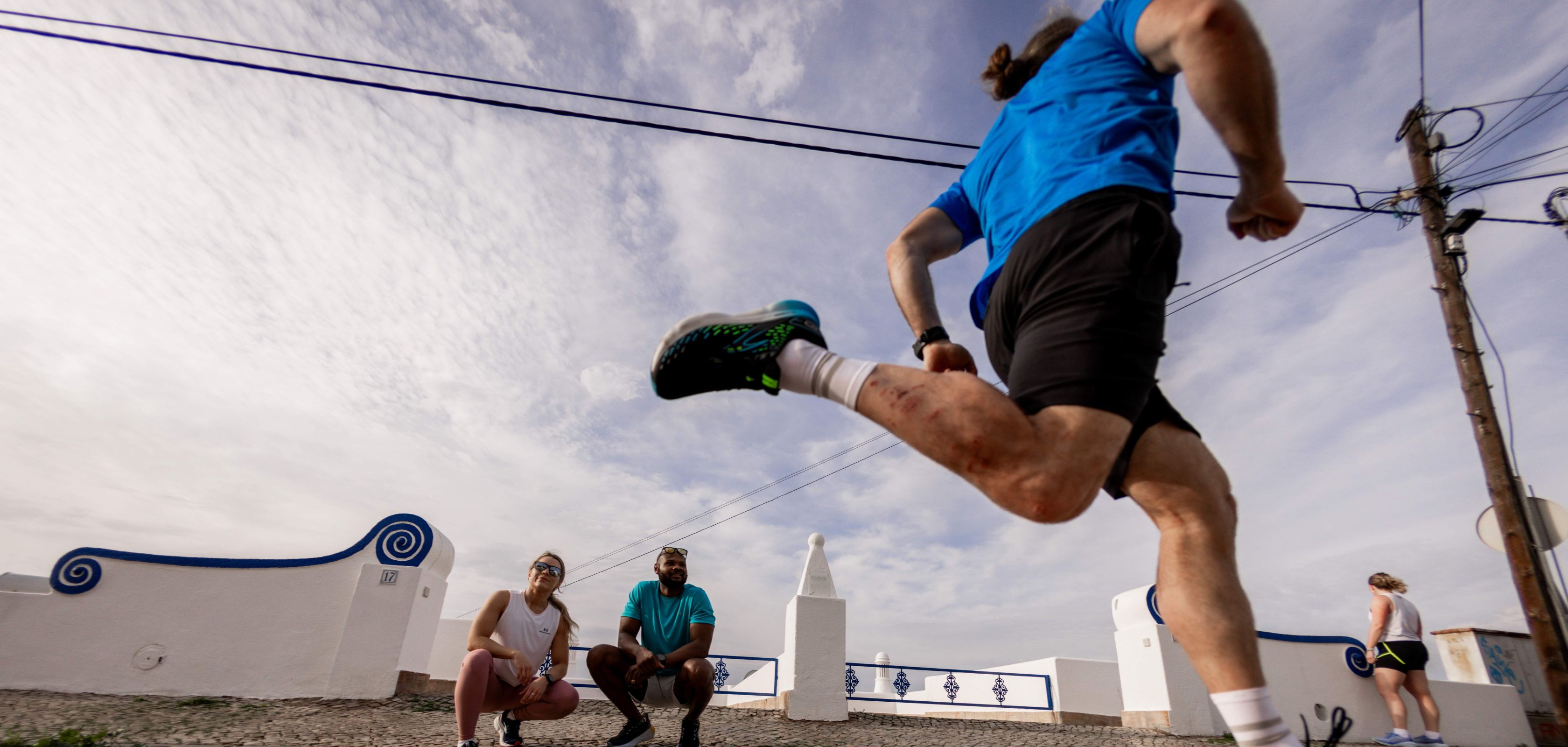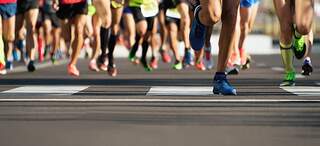Ready to transform your fitness and achieve a milestone you’ll be proud of? The Couch to 5K plan is the perfect starting point for absolute beginners who want to build up from walking to running a full 5 kilometres—no previous experience required. This guide will walk you through everything you need to know, from what to expect in your first week to expert tips on gear, nutrition, and motivation. Whether your goal is to get healthier, boost your mood, or simply prove to yourself that you can do it, you’re in the right place. Let’s lace up and start your journey from the couch to your first 5K!
What Is Couch to 5K?
Couch to 5K (often called C25K) is a free, beginner-friendly running programme designed to guide absolute beginners from little or no activity to running 5 kilometres (3.1 miles) in just 9–12 weeks. . The plan involves three sessions per week, mixing short intervals of running and walking that gradually increase your stamina and confidence, making it accessible to all fitness levels and ages. By following the structured schedule, you’ll progress safely and steadily from the couch to confidently running a full 5K, with support from apps, podcasts, or online guides along the way
The plan was originally created by Josh Clark in the 1990s for his mother and has since become a global phenomenon, adopted by millions—including the NHS in the UK.
How Does the Couch to 5K Plan Work?
The classic Couch to 5K programme involves three sessions per week, with rest or cross-training days in between. Each session mixes running and walking intervals, gradually increasing the running time while reducing the walking breaks.
You’ll start with short bursts of running—often just 1 minute at a time—followed by walking to recover. Over the weeks, the running segments get longer, until you’re able to run for 30 minutes or complete a full 5K without stopping.
Key Features:
- Three sessions per week
- Rest or cross-training days in between
- Gradual increase in running time
- Flexible pace—go as slow as you need
- Suitable for all fitness levels
Week-by-Week Couch to 5K Training Plan
Below is a detailed, easy-to-follow 12-week plan. Remember: listen to your body, and feel free to adjust the plan to suit your needs.
Weeks 1–4: Building the Foundation
| Week | Monday | Tuesday | Wednesday | Thursday | Friday | Saturday | Sunday |
|---|---|---|---|---|---|---|---|
| 1 | 30min quick walk | Rest | Walk 4min, jog 1min (x4) |
Rest | Walk 4min, jog 1min (x4) |
Rest | Jog 3–5min, walk 3min (x6) |
| 2 | 30min quick walk | Rest | Walk 4min, jog 1min (x5) |
Rest | Walk 4min, jog 1min (x5) |
Rest/30min walk | Jog 5–6min, walk 3min (x5) |
| 3 | 40min quick walk | Rest | Walk 4min, jog 2–3min (x3) |
Rest | Walk 3min, jog 2–3min (x3) |
Rest/30min walk | Jog 5–8min, walk 3min (x5) |
| 4 | 40min quick walk | Rest | Walk 4min, jog 2–3min (x3) |
Rest | Walk 3min, jog 2–3min (x3) |
Rest/30min walk | Jog 5–8min, walk 3min (x5) |
Weeks 5–8: Increasing Stamina
| Week | Monday | Tuesday | Wednesday | Thursday | Friday | Saturday | Sunday |
|---|---|---|---|---|---|---|---|
| 5 | 45min quick walk | Rest | Walk 3min, jog 2–3min (x5) |
Rest | Walk 2min, jog 3–4min (x4) |
Rest/40min walk | Jog 10–12min, walk 3min (x3) |
| 6 | 45min quick walk | Rest | Walk 3min, jog 3–4min (x4) |
Rest | Walk 2min, jog 5–7min (x4) |
Rest/40min walk | Jog 12–15min, walk 3min (x2) |
| 7 | 45min quick walk | Rest | Walk 3min, jog 4–5min (x5) |
Rest | Walk 2min, jog 6–8min (x4) |
Rest/45min walk | Jog 15min, walk 3min (x2) |
| 8 | 45min quick walk | Rest | Walk 3min, jog 4–5min (x4) |
Rest | Walk 2min, jog 8–10min (x3) |
Rest/45min walk | Jog for 20–25min |
Weeks 9–12: Race Preparation
| Week | Monday | Tuesday | Wednesday | Thursday | Friday | Saturday | Sunday |
|---|---|---|---|---|---|---|---|
| 9 | 45min quick walk | Rest | Walk 2min, jog 5min (x5) |
Rest | Walk 2min, jog 10–12min (x3) |
Rest/45min walk | Jog for 20–30min |
| 10 | 45min quick walk | Rest | Walk 2min, jog 5min (x5) |
Rest | Walk 2min, jog 10–12min (x3) |
Rest/45min walk | Jog for 30–35min |
| 11 | 45min quick walk | Rest | Walk 2min, jog 5min (x5) |
Rest | Walk 2min, jog 3–4min (x5) |
Rest/45min walk | Jog for 35–40min |
| 12 | 30min quick walk | Rest | Walk 2min, jog 5min (x3) |
Rest | Walk 2min, jog 3–4min (x3) |
Rest/30min walk | Run 5K! |
Essential Gear for Beginner Runners
Starting a running journey doesn’t require much, but having the right gear can make your experience safer and more comfortable.
Running Shoes
The single most important investment for a beginner runner is a quality pair of running shoes. Proper running shoes provide the right support, cushioning, and fit, helping to prevent injuries and make every stride more comfortable. Popular beginner-friendly models in 2025 include the Brooks Ghost 16, Asics Novablast 5, Nike Pegasus, Hoka Clifton, Saucony Ride, and New Balance options—all known for their balanced cushioning and durability. Visit a specialist store for a gait analysis to ensure the best fit for your foot type and running style.
Technical Clothing
Comfort is crucial. Choose moisture-wicking fabrics like polyester, nylon, or merino wool to keep sweat away from your skin and regulate body temperature. These materials help prevent chafing and overheating, unlike cotton, which traps moisture and can cause discomfort. For tops, options like the New Balance Jacquard T-Shirt offer breathability and stretch, while for bottoms, look for running shorts or tights with a comfortable fit and, ideally, a built-in liner for added support
Visibility and Safety
If you run in low-light conditions, high-visibility (Hi-Vis) clothing with reflective elements and running lights are essential to ensure you’re seen by drivers and other road users. Fluorescent clothing is best for daylight, while reflective gear is crucial at night.
Nutrition and Hydration for New Runners
Balanced Nutrition
A beginner runner’s diet should focus on three key macronutrients: carbohydrates, protein, and healthy fats. Carbohydrates (from whole grains, fruits, and vegetables) are your muscles’ primary fuel source, especially for higher-intensity or longer runs. Protein (from meat, fish, dairy, legumes, eggs, and nuts) is essential for muscle repair and adaptation. Healthy fats (from nuts, seeds, oily fish, avocados, and olive oil) support energy, hormone production, and vitamin absorption.
Micronutrients
Vitamins and minerals—like iron, calcium, magnesium, and B vitamins—play vital roles in muscle function, bone health, and energy metabolism. Most runners can meet these needs through a varied, whole-food diet, but plant-based runners should pay special attention to iron, B12, and iodine intake.
Pre-Run Nutrition
Eat a balanced meal 2–4 hours before your run, combining complex carbs and protein for sustained energy (e.g., whole grain toast with eggs, porridge with fruit, or a rice bowl with chicken and vegetables). If you run in the morning or need a snack closer to your session, opt for easy-to-digest options like a banana, yoghurt, or an energy bar 30–60 minutes beforehand. Bananas are especially popular for their quick energy and potassium content, which helps prevent muscle cramps.
During the Run
For runs under an hour, water is usually sufficient. If your session lasts longer than 60 minutes, consider bringing a sports drink or energy gel to replenish carbs and electrolytes. Aim for 30–60g of carbohydrates per hour for longer efforts.
Hydration
Proper hydration is crucial for performance and recovery. Drink 17–20 ounces (500–600ml) of water 2–3 hours before running and another 8 ounces (about 240ml) 20–30 minutes prior. During your run, sip 5–8 ounces (150–240ml) every 15–20 minutes, adjusting for heat, humidity, and personal sweat rate. Electrolyte drinks or tablets can help replace sodium, potassium, and magnesium lost through sweat, especially in hot conditions or after longer runs.
Post-Run Nutrition
After running, refuel within 30–60 minutes with a mix of carbohydrates and protein to restore glycogen and support muscle repair. Classic options include chocolate milk (which offers an ideal carb-to-protein ratio), smoothies with fruit and protein powder, or a balanced meal with lean protein and whole grains. Rehydrate by replacing fluids lost during exercise—16–24 ounces (500–700ml) per pound of weight lost is a good rule of thumb.
FAQs
Couch to 5K is a free, beginner-friendly running programme designed to take you from little or no exercise to running 5 kilometres (3.1 miles) in about nine weeks. The plan involves three runs per week, gradually increasing the amount of running and reducing walking intervals, so you build stamina and confidence at your own pace.
Most plans last 9–12 weeks, but you can go at your own pace—repeat weeks as needed.
Download the NHS Couch to 5K app or a similar app, choose a start date, plan a safe running route, and wear comfortable running shoes and clothing. The app will guide you through each session with audio coaching and progress tracking.
While you don’t need expensive equipment, a pair of well-fitted running shoes is highly recommended to reduce injury risk and improve comfort. Wear clothes that are comfortable and suitable for the weather. Women should wear a supportive sports bra.
Yes, you can complete the entire Couch to 5K programme on a treadmill if running outdoors isn’t suitable. Set the treadmill to a slight incline (1%) to better mimic outdoor conditions.
Rest days are important for recovery and injury prevention. Only skip them if you feel strong and have no soreness, but generally, it’s best to follow the plan and allow your body to adapt.
Eat a light, carb-rich snack (like a banana or toast with peanut butter) 30–60 minutes before running. After your run, refuel with a mix of carbohydrates and protein (such as yoghurt with granola or a smoothie) to aid recovery. Hydrate before and after every run.
Set small, achievable goals, track your progress, and celebrate milestones. Running with a friend, joining a group, or sharing your journey online can help keep you accountable and motivated.
Not everyone will run 5K in under 30 minutes at first, and that’s okay. Most beginners finish between 28 and 45 minutes. With continued practice, your speed will improve.
Yes! Couch to 5K is designed for all ages and fitness levels. If you have any medical conditions, check with your GP before starting.
Couch to 5K improves cardiovascular fitness, helps with weight management, strengthens bones, boosts mood, reduces stress, and increases self-esteem.
Related Articles








